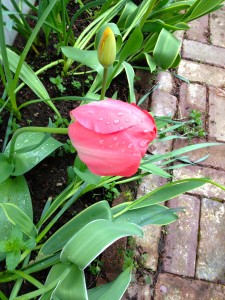There’s a number of tools for evaluating how a blog’s doing traffic-wise, but I’m not sure why anyone doesn’t just use Google Analytics, which will tell you how many visitors, where they’re coming from, what pages they’re looking at, and much more. Much like SEO, this is something that could take up its own workshop, and we didn’t get much to explore it in class. Hopefully these links will prove an alternate entrance.
GOOGLE ANALYTICS RESOURCES:
Google Analytics Lessons: http://www.google.com/support/conversionuniversity/bin/request.py?hl=en&contact_type=indexSplash&rd=1
Google Analytics Web Channel: http://www.youtube.com/googleanalytics
Tutorial on Determining Social Media ROI: http://searchenginewatch.com/article/2075044/Google-Analytics-Tutorial-Determining-Social-Media-ROI
Google Analytics & Why You Probably Don’t Need the Rest: http://www.hongkiat.com/blog/google-analytics-why-you-probably-dont-need-the-rest/
Maximizing Visitor Retention with Google Analytics: http://webtoastie.co.uk/maximising-visitor-retention-with-google-analytics/
Web Analytics Demystified: http://www.kaushik.net/avinash/web-analytics-demystified/






One Response
One of the things I caution students in the (my) blog class, tho, is that the numbers provided by analytics look a lot more precise than they probably are. Numbers like page views and unique users and such are notoriously fuzzy and should not be taken at face value. About the best you can get from them are relative trends — i.e., one blog post is definitely more popular than another by some squinty sort of margin.
Note also that Google Analytics et al. are not specifically designed for blogs, they’re designed for commercial websites. As such, stats like bounce rate are not meaningful in the same way.
Still, it’s definitely worthwhile to use analytics; you learn surprising things about your blog that way.
PS People are aware, right, that adding analytics to a site has an impact on overall performance — ? Not a big one, but it’s additive, and each little external call that you add to a blog site — analytics, feed burner alert, etc. — is one more little blip.